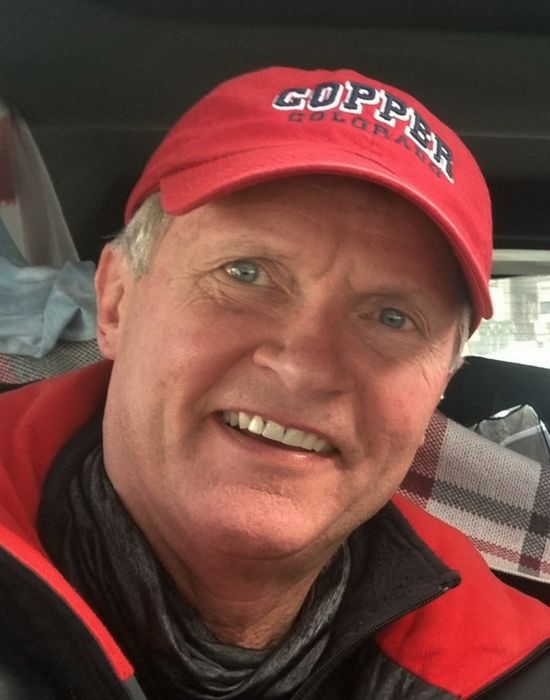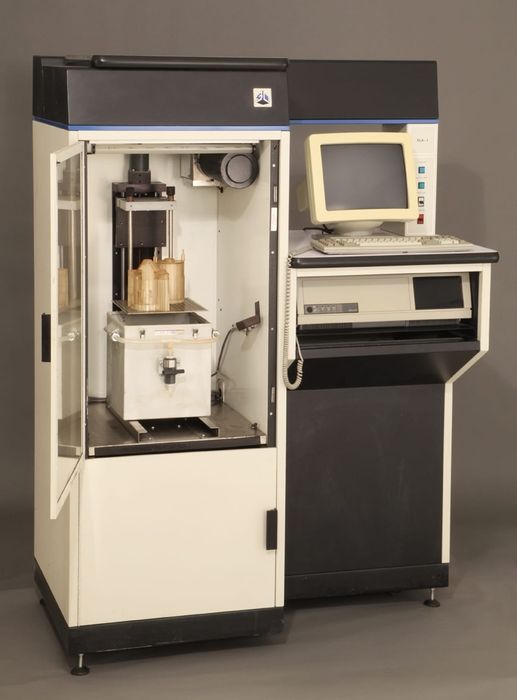
Wohlers reflects on the company’s humble beginnings, acquisition news, and the future of the 3D printing industry.
Last month, global standards organization ASTM International acquired Wohlers Associates, an intelligence leader in the additive manufacturing (AM) industry for over 30 years. Wohlers Associates’ full portfolio of products and services—which include the Wohlers Report, training in design for AM, and consulting services—will now be supported by ASTM’s Additive Manufacturing Center of Excellence. The acquisition will expand ASTM’s footprint in the 3D printing space and accelerate the adoption of additive manufacturing technologies.
Engineering.com caught up with Terry Wohlers, president of Wohlers Associates, to discuss his new role as head of additive manufacturing market intelligence at ASTM International. Wohlers has a long history as an industry analyst for 3D printing; in fact, last month also marked the company’s 35-year anniversary.
Engineering.com: Congratulations on joining up with ASTM.
Terry Wohlers: Oh, thank you. It’s very exciting for us.
Before we go into a discussion about the acquisition, could you kick things off with a brief introduction about yourself and your journey up until this point?
I’d be happy to. You’ll need to give me a limit on time because 35 years is difficult to summarize in a short time. I can hit the brief highlights if you’d like.
So, the company was founded 35 years ago. It focused on CAD/CAM applications and product development in the beginning. We did some small consulting projects back then, but I was young and the company was new. It took some years to really get going.
The following year, 1987, is when stereolithography was introduced. It was the first additive manufacturing technology to be commercialized (in 1988), and it got my attention. That’s when we began to almost immediately shift in that direction. For four years, from 1989 to 1993, I assisted the world’s largest manufacturer of custom-fit, in-the-ear hearing aids on a consulting basis. The company asked me to be a sponge. Soak it all in, write and submit a report every month, and meet with management every quarter. Back then, 3D printing was very new and few people knew much about it.

The last 34 years have been focused on AM and 3D printing. We secured a couple of interesting projects early on that helped create the foundation of the company. One was working with the world’s largest manufacturer of custom-fit, in-the-ear hearing aids. It was the first industry to adopt the technology for production applications on a large scale. Meanwhile, we got a contract with the U.S. government that spanned for seven years. It was more focused on developing 3D scanning and custom software, and exporting the model data to 3D printers to produce very interesting custom products.
Over this time, I got out, met people, and shook hands. I was writing and speaking a lot then—so I was meeting even more people. That is how the company got off the ground. A few years later—it would be 26 years ago this year—we decided to launch the Wohlers Report. It started out small, but grew over time, and it has been published every year since then.
The company has always been relatively small. I wanted to keep it lean and simple from an organizational point of view. I wanted to spend my time and energy on technology, applications, and the business of additive manufacturing, and minimize the effort of managing many people. We’ve completed large projects, and we have a great team, in my view. Sometimes, we will partner with domain experts to assist with projects. That’s how we get things done when we don’t have the resources in-house. Nearly 90 people in 34 countries assisted with Wohlers Report 2021. Also, it was supported by 124 service providers, 113 manufacturers of AM systems, and 24 producers of third-party materials. The project is vast in number of inputs, which are from nearly every corner of the world.
How do we preserve 35 years of work and keep it going without me driving it, at least not in the driver’s seat? We looked at different options—now we’re getting into the acquisition, so stop me if you want to take the conversation in a different direction.
Before we touch upon the acquisition—what drew you to 3D printing in the first place, all the way back when you’d just started?
Good question. I first learned about it from a newsletter from a friend, Dr. Joel Orr, who included a paragraph on 3D Systems and stereolithography. Back then, email wasn’t popular, so almost everything was done by phone and snail mail. I called the company and it sent a full-scale distributor cap—a part for an automobile at the time (prior to electronic ignition). Along with the photopolymer part, the company sent a videotape and a brochure. My jaw hit the floor when seeing the part and watching the video. I was like, “Wow, this is absolutely incredible,” thinking that this could be as big or bigger than CAD solid modeling, which was quite new at the time. Together, they could become powerful, from a product development and manufacturing point of view. That’s when the light bulb switched on for me.
Back then, it didn’t take much to become an expert in something, if you knew just a little bit more than most others. That’s how it developed for Wohlers Associates and me. I got excited about it, wanted to learn more, and pursued it.
Tell us about the acquisition.
We started to look at it more seriously in 2019—and soon thereafter, the pandemic hit. The mergers and acquisitions (M&A) activity hit some strong headwinds from March 2020 to March 2021. In April of this year, we secured a great M&A company named STS Capital Partners. The people there really took the bull by the horns and did a great job at uncovering many candidate organizations, several of which were a good fit for our business. Over time, we narrowed it down and began to negotiate with a few of them.
We landed on ASTM International, and I am glad we did. The more I work with the organization, the more it confirms the decision. My wife was a part of it too, and I would seek input from others too. Ultimately, the decision—good or bad—rested on my shoulders. ASTM International is a great organization with fantastic people and resources. I had worked with ASTM since 2009 as part of the ASTM Committee F42 on Additive Manufacturing Technologies, so I knew a bit about the organization.
In 2018, ASTM launched its Additive Manufacturing Center of Excellence (AM CoE). This was another interesting step in showing its commitment to AM. ASTM continues to invest in and bring together great people and resources to help grow the AM industry—work that then can lead to consensus standards, which help grow the industry. It’s impossible to name a developed and mature industry that do not have strong standards in place. They are central to what ASTM International is all about—in this context, standards on AM.
To help grow AM and standards, we need to educate people at all levels, from middle school through postgraduates, as well as the current workforce for getting practicing professionals up to speed. We offer hands-on training on design for additive manufacturing (DfAM), which I believe was attractive to ASTM. We’ve done consulting work for a very long time, in addition to publishing and participating in events worldwide. ASTM also felt it was a good fit to combine our brands, people, and our AM portfolio of products and services. What’s more, we want to grow and expand them over time. We now have about 20 experts dedicated to AM at the CoE—if you include our regular contracting consultants—giving us more breadth and depth than we have had in the past.
Is everything growing, even the resources for putting together the Wohlers Report?
That’s right. ASTM owns 100 percent of Wohlers Associates, and it is keeping our team together. Of course, it is being integrated into the AM CoE. We’ve got what we believe is pretty well-oiled machine. Is there room for our improvement? Of course. We constantly work to improve our processes and are always trying to make things as good as they can possibly be. But for the most part, Wohlers Report 2022 —which we’ve already started—is going to remain with the core team with support from the broader team. We will certainly seek input and benefit from the added resources from ASTM International.
Where would you say 3D printing currently is in terms of standardization?
That’s a good question. I don’t know that anyone can really answer that accurately because even industries that have been around for 50-100 years are still evolving, and new standards are continuing to develop. What’s interesting about AM is that so many processes and materials have been developed and are continuing to be developed. It’s also important to consider all the applications, from concept modeling and prototyping to tooling and series production. What’s also interesting are the many industrial sectors that AM touches. It’s hard to name one that hasn’t or won’t be impacted by this technology. Almost everything will be impacted, either through product development or manufacturing of the final product. If that’s true, then the need for standards is vast.
I mentioned the 2009 timeframe when I got involved with ASTM International. That’s when I chaired the terminology subcommittee, which I continued for five years. We published the first AM standard ever and it was focused on terminology. Since then, about 40 AM industry standards have been published by ASTM and ISO/ASTM. The two organizations formed a partnership years ago to work together to co-develop and co-brand standards, and that’s exactly what has happened.
A lot has been accomplished with consensus standards, and that’s how ASTM standards are developed. It involves many volunteers in which anyone can become involved. Voting on the standards requires an annual membership, which is $75. Suppose 100 people vote on a standard, and one out of the 100 doesn’t like some element of the proposed standard. This one person can bring it to a halt. All 100 must agree before a standard passes, which illustrates the rigor that consensus standards go through. It often takes years for a new standard to develop. I have a real appreciation for what it takes and how important these standards can become.
Read more at ENGINEERING.com
